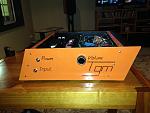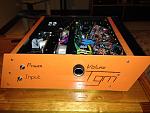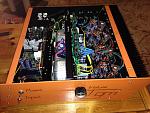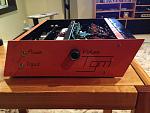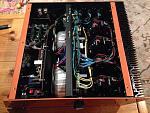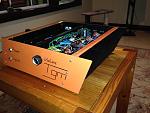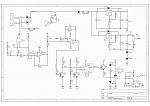What we are looking at here is the Fast Fourrier Transform (FFT) of the line output from my
b-board buffer recorded at 24 bit, 96 kHz by an Onkyo SE-200PCI sound card. Upstream from the b-board is the
Phonoclone 3 MC phono stage, connected to a Denon DL-103. The tonearm is Denon DA-307, and the deck is a Denon DP-2000.
Four recordings, taken 1) with music playing, 2) with the tonearm raised 3) with the phonoclone powered off and 4) with the b-board and all upstream components powered off.
True 24/96 data was obtained, measurements out to 48 kHz are possible, with -130 dB noise floor. (I was using Digionsound 6 to do the recording as Audacity truncates 24 bit recordings to 16 bit in Windows due to licensing issues. The FFT was generated in Audacity however.)
The soundcard's line input may have an impressive-looking low noise floor, but it's still useless for measuring line level audio devices like the b-board because the noise of the preamp/ADC...












